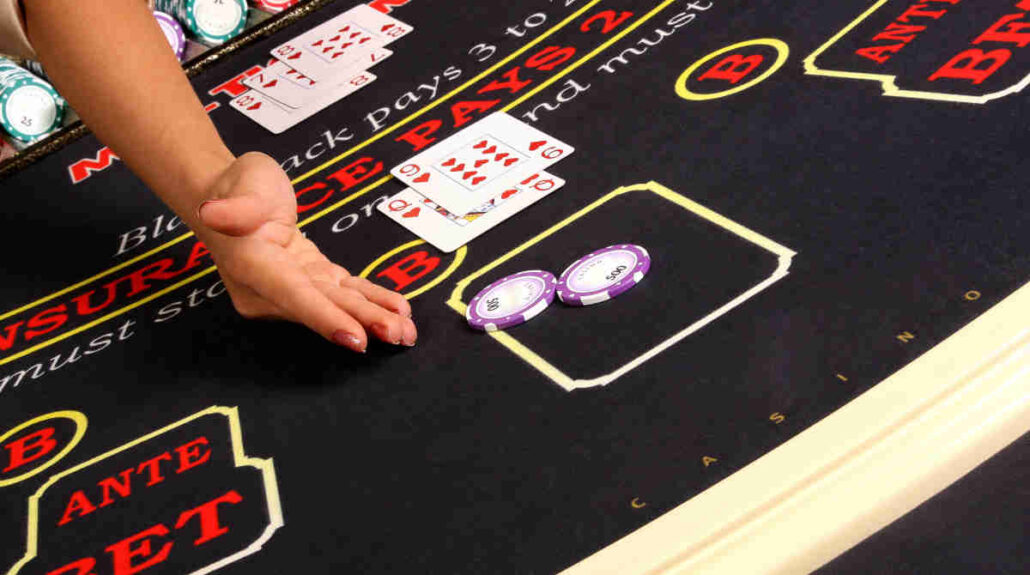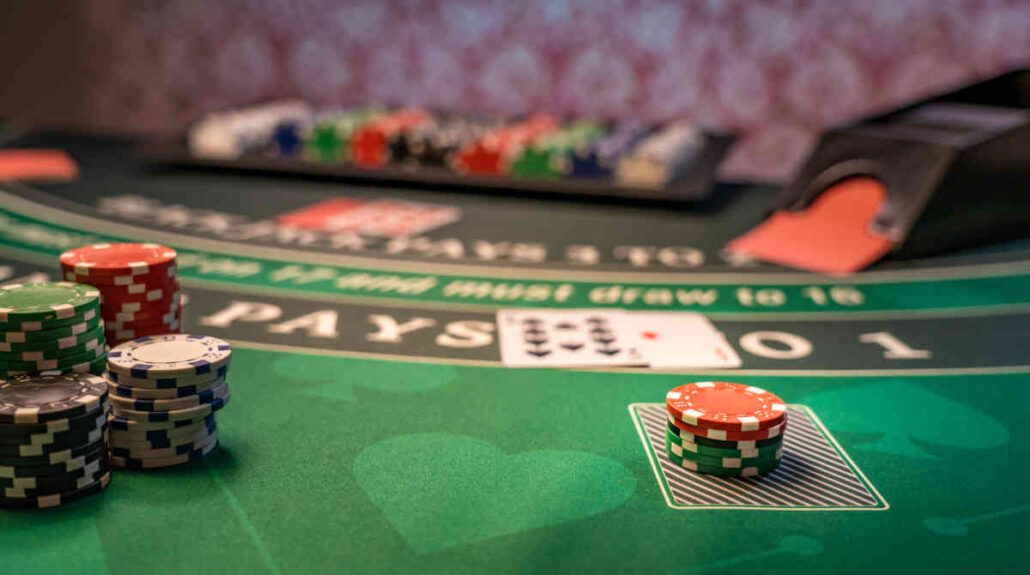Single Deck Blackjack Strategy – Is It the Best Game to Play?

Although multi deck blackjack games are now the norm in casinos worldwide, single deck blackjack has long been the go-to game for casino players in the past. In fact, the game was originally played with just one deck.
Nowadays, it can be harder to find single deck blackjack games. But, there are still online casinos that offer this variant.
On this page, we’ll discuss why single deck blackjack should be the game of your choice and the best strategies you can implement when playing it.
Single Deck Blackjack Rules
Single deck blackjack has standard rules and the same objective as other classic blackjack variations. To win the game, you should get as close to 21 without going over and have a higher-valued hand than the dealer.
All cards have standard values, with each face card counting ten points. The Ace can be counted either as 1 or 11. Hands that contain an Ace are called soft hands. Those that don’t or have an Ace that can only be counted as one are called hard hands.
In most casinos, the house rules will require the dealer to hit on a soft 17. When overviewing the best single deck strategies in this guide, we’ll use this rule.
However, in some casinos, the dealer must stand on a soft 17. This difference in rules impacts how you should play the game.
How to Play One Deck Blackjack

Every game of single deck blackjack begins with you and the other players placing the bets. Once all of the players have placed their bets, the dealer will deal two cards to every player.
You and the other players will receive both cards face-up, while the dealer will receive one face-up and one face-down card.
After this, you can evaluate your hand, look at the dealer’s upcard, and decide whether you want to hit, stand, split, or double down. In some casinos, you will also have the option to surrender.
The dealer will also draw, if necessary, according to the house rules. If the dealer busts, players who didn’t bust automatically win. If the dealer stands on a particular hand, the hand is compared to each player’s cards.
The players that have a higher-valued hand win. Following this, a new round starts with the players placing their bets.
Blackjack Single Deck Strategy
To play single deck blackjack optimally, you can use a blackjack chart. These convenient sheets cover all of the information you need in an easy and straightforward manner.
By following these predetermined decisions, you’ll ensure you play every hand optimally. To make this even easier to learn, we’ll outline the best actions based on hard/soft hands and specific actions.
Before we get into it, it’s important to note that the examples below are for single deck blackjack games in which the dealer must hit on a soft 17.
This is the standard rule you’ll see in most land-based and online casinos. Here’s the best strategy for single deck blackjack:
Hitting/Standing in Single Deck Blackjack – Soft Hands
To ensure all possible hands are covered, we need to separate soft hands and hard hands, as the decisions can drastically differ between them. With that in mind, here’s a detailed overview of when you should hit or stand if you have a soft hand in single deck blackjack:
- A-2 Hand — Always hit and double if available when the dealer is showing 4-6.
- A-3 Hand — Double if available if the dealer’s upcard is 4-6, otherwise, always hit.
- A-4 Hand — Always hit and double if available when the dealer is showing 4-6.
- A-5 Hand — Double if the dealer’s card is 4-6, otherwise, always hit.
- A-6 Hand — Double if available when the dealer’s face-up card is 2-6, otherwise hit.
- A-7 Hand — Stand if the dealer is showing a 2, 7, or 8. Double if available when the dealer is showing a 3, 4, 5, or 6, otherwise stand. Hit if the dealer has a 9 or higher.
- A-8 Hand — Double if available when the dealer is showing a 6, otherwise, stand. Also, stand if the dealer’s face-up card is anything other than 6.
- A-9 Or Better Hand — Always stand if your total is 20 or 21, regardless of the dealer’s hand.
Hitting/Standing in Single Deck Blackjack – Hard Hands
A hard hand is one that doesn’t contain an Ace. Here’s what you do depending on the value of your hard hand in single deck blackjack:
- 5-7 Hand — Always hit, no matter what the dealer's face-up card is.
- 8 Hand — Double if the dealer shows a 5 or 6, for all other cards always hit.
- 9 Hand — Hit if the dealer’s up card is a 7 or better, otherwise double if allowed.
- 10 Hand — Double if allowed if a dealer is showing 2-9. If the dealer is showing 10 or better, always hit.
- 11 Hand — Always double if allowed, otherwise, always hit.
- 12 Hand — Stand if the dealer’s upcard is 4-6, hit if they have any other card.
- 13 Hand — Stand if the dealer’s upcard is 2-6, hit if their card is a 7 or higher.
- 14 Hand — Stand if the dealer is showing 2. Hit if they are showing any other card.
- 15 Hand — Stand if the dealer’s face-up card is 2-6, hit if their card is 7-Ace.
- 16 Hand — Always stand if the dealer’s card is 2-6 and stand if their card is 7-9. If the dealer is showing a 10 or higher, surrender if available. If not, hit.
- 17 or Higher Hand — Always stand if your total is 17 or better.
When to Split in Single Deck Blackjack

Besides hitting and standing as the two main actions in blackjack, you’ll sometimes also have the option to split your hand. This will be available if you receive a pair of matching cards.
Splitting in single deck blackjack is the action of dividing your hand into two separate hands. To do so, you will have to post an additional bet, equal to your original one.
When you split your hand into two, you’ll be able to play each of the two hands individually, potentially winning both.
However, to make sure you play your cards right, it’s essential to know which hands you should split and when. If the dealer stands on a soft 17, here’s what you should do for each pair:
- 2-2 Hand — Split if the dealer’s upcard is 3-7, otherwise hit.
- 3-3 Hand — Split if the dealer shows 4-7, otherwise hit.
- 4-4 Hand — Split if the dealer’s upcard is 4-7, otherwise hit.
- 5-5 Hand — Double if the dealer shows 2-9, hit if their upcard is an Ace or worth ten points.
- 6-6 Hand — Split if the dealer shows 2-6 and hit if the dealer shows an 8-A. If the dealer’s upcard is a 7, split if double after split is allowed, otherwise hit.
- 7-7 Hand — Split if the dealer shows 2-7 and hit if their upcard is a 9. If the dealer shows an 8, split if double after the split is allowed, otherwise hit. Surrender if the dealer’s card is a ten or Ace, otherwise stand or hit, respectively.
- 8-8 Hand — Always split a pair of eights.
- 9-9 Hand — Stand if the dealer’s upcard is a 7 or 10. If a dealer is showing an Ace, split if double after split is allowed, otherwise stand. Split if the dealer is showing any other card.
- 10-10 Hand — Always stand if you have a pair of tens or a pair of face cards.
- Ace-Ace Hand — Always split a pair of Aces.
Surrendering in Single Deck Blackjack
Some casinos will also offer you the option to surrender. If this option is available, you can surrender before receiving any additional cards. When you fold your hand this way, you will receive half of your original bet back.
Most players consider surrendering in blackjack a bad option and recommend avoiding it. That said, surrendering can still be an effective tool for preserving your bankroll. But, it’s crucial to know when you should do so.
Most notably, you should always surrender if you have a hard 16 (that’s not a pair of eights) and the dealer’s upcard is a ten or Ace. If the rules state that the dealer can hit on a soft 17, it’s also smart to surrender a hard 15 and hard 17.
Should You Take Insurance in Single Deck Blackjack?

If the dealer receives an Ace for their upcard, you will have the option of taking insurance. This side bet protects you in case the dealer has blackjack, as you’ll get a payout of 2:1 for it, even though you’ll lose your main bet.
However, you should generally avoid taking insurance. So, what makes insurance a bad side bet?
The main reason why you should avoid taking the insurance bet in single deck blackjack is that it drastically increases the house edge. In a game of single deck blackjack, the insurance bumps the casino’s advantage to about 5.8%.
When you place an insurance bet, the odds will typically be against you. In most cases, the dealer won’t have ten or a face card as their other card.
So, it’s best to just accept the few scenarios in which they do have a blackjack and generally avoid placing the insurance bet. This is a more optimal way to play the game long-term.
Biggest Differences Between Blackjack Single Deck and Multi Deck Games
A few decades ago, single deck blackjack was the widely accepted standard. Unfortunately, times have changed significantly. So much so that single deck blackjack is very difficult to find.
Most brick-and-mortar and even online casinos nowadays feature multi deck games. However, you will still find a fair number of sites featuring live dealer single deck blackjack tables.
So, what are the main differences between single deck and multi deck blackjack games? The most significant difference is in the house edge, which is just around 0.15% in single-deck games.
In comparison, in multi deck blackjack, it can be up to four times higher, depending on the total number of decks.
Naturally, you can’t apply the same blackjack strategy to single deck and multi deck games. For instance, doubling down is a less risky move in single deck blackjack, as there are fewer ten-point cards. What’s more, counting cards is much more straightforward with a single deck.
With all of this said, even single deck blackjack games aren’t as favorable as they were in the past. This is because most single deck blackjack games nowadays pay 3:2, while multi deck games pay 6:5. It’s very challenging to find a 6:5 single deck blackjack game.




